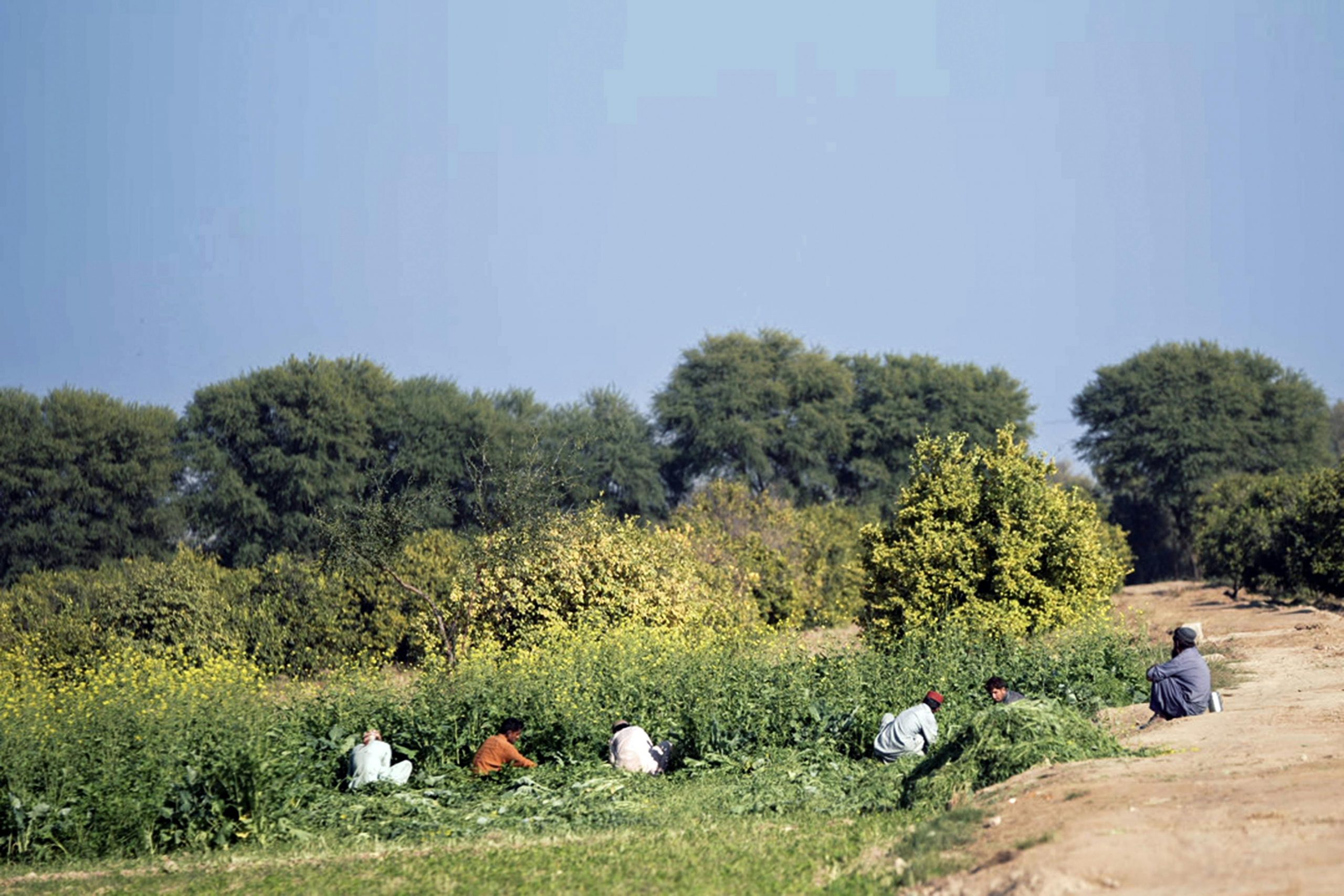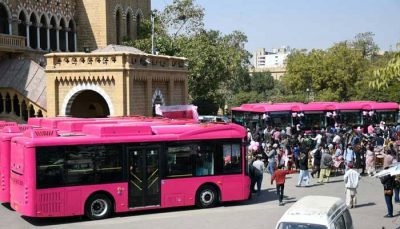Pakistan’s Khyber Pakhtunkhwa (KP) has undergone significant changes in the past two decades. These changes have been at multiple levels across economic, social and political dimensions resulting in a profound impact on the province’s long-term economic stability and growth. The 18th Amendment has led to a greater transfer of resources along with the autonomy to spend on its own development needs across provinces. Investments under China Pakistan Economic Corridor (CPEC) have resulted in further spending on massive infrastructure development in KP with the potential to change its economic landscape. PTI’s re-election to the province in 2018 led to a much-needed political continuity with potentially positive impact on the progress of development projects. However, the merger of FATA into KP has added to the provincial government’s responsibilities to cater to a region that is largely rural and underdeveloped with implications on budgetary outlays.
Changes in population demographics and urban landscape are also impacting KP. Pakistan has the highest rate of urbanization in South Asia with 36.4% of its entire population now residing in cities. A fifth of all Pakistanis live in just 10 cities across the country. As per the last census, KP has grown by 2.89%, second only to Baluchistan. Yet, the province has had the lowest level of urbanization across Pakistan with only 18.77% of its population living in cities, much lower than the national average. Overall, only 7.8% of the country’s total urban population resides in KP.
In this context, what can be the role of KP’s cities in supporting provincial growth and development? What kind of economic growth can the province experience and how can urban KP stimulate the provincial economy?
State of Urban KP
Multiple bottlenecks are impeding the development of KP’s cities. These include inefficient urban land-use, poor accessibility, coverage and quality of public service delivery, massive spatial disparities, and overconcentration of economic activity in some regions of KP, such as domination by the Peshawar valley region. These factors have affected KP’s economic performance but must be addressed by the provincial government to realize the true potential of its human and natural resources and drive its urban economy.
Rising Urban Population and Socio-Economic Disparities across Districts
KP’s rising urban population presents a substantial hurdle in achieving social welfare goals set by the government for its citizens. More people are flocking to KP’s cities and widening rural-urban population disparities. This is leading to the creation of high and low growth clusters. For example, KP now has four major urban centers: Mardan, Nowshera, Charsadda and Peshawar, all clustered together. Not only does this region have a high urban population, but there is great disparity in development and welfare levels compared to other clusters such as the Dera Ismail Khan region.
KP’s urban sprawl is also high in addition to being haphazard and ill-planned. More than two thirds (66%) of its population is just an hour away from the city while a whopping 90% is two hours away. Such spatial disparities remain a challenge for the government as lagging districts become disconnected from the high growth Peshawar cluster, becoming more prone to reduced social cohesion and an increased risk of conflict. This disparity can be illustrated by how each of the top four districts, not surprisingly from the Peshawar cluster, contribute approximately 3,500 students enrolled in bachelors level programs. However, there are 18 districts, in other regions of KP, that account for less than 1000 students.
Uneven Economic Activity Across KP
Level of industrialization varies greatly across the province, revealing disparity among the regions. Of the 2,247 functioning industrial units in KP, 647 are in Peshawar alone. In contrast, there are only two industrial units in Shangla and four in Hangu, and this is another reason why the industrial labour force is most likely to migrate to the greater Peshawar region. There is also great variation in levels of urbanization (45.5% in Peshawar vs 0% in Bajaur), population density (1,623 people per sq. km in Peshawar vs only 30 in Chitral) and per capita energy consumption (422 kWh per person in Nowshera vs 138 kWh in Lower Dir).
On all development outcomes, newly merged districts of the former FATA region are lagging behind by large margins as a vast majority of their population lives in rural conditions. This presents opportunities for economic growth but also challenges in building-up human capital, stimulating investments and generating employment.
By developing policies that are mindful of these factors, reform measures can help create a future where KP’s cities can become hubs of innovation for businesses, offering higher quality of life for citizens and enabling equitable economic growth that is inclusive of all regions of the province.
Poor Public Service Delivery Coverage, Quality and Accessibility
KP is stressed for resources to provide adequate service delivery to its citizens and this issue is compounded by a rising population. Lack of adequate amenities is contributing to low human development. Only 54% of KP’s population is connected to the water supply. Shortage of housing units have given rise to slums and speculative land and unregulated markets. Presently, almost half of the provincial population is impoverished in terms of education, health and living standards, while unemployment rate at 7.2% remains the highest amongst all provinces The HDI of the newly merged areas lags far behind the national and provincial average.
Such inequality and disparities in growth can cripple cities and pose serious economic and political challenges for the government in power. These challenges call for a robust urban policy that puts human development to the forefront and ensures equitable gains as cities need to become productive and inclusive centres of growth.
How has the KP Government responded to these challenges?
The GoKP has in recent years prioritized the welfare of its cities by way of CPEC related development investments with the hope that such setting up of new industries, power generation plants, and rail and road infrastructure projects will generate employment for the burgeoning local population and help alleviate poverty across KP.
The path from industrialization and CPEC investments to social welfare as envisioned by the government lies through cities and targeted interventions in urban policy. Cities will need to be at the heart of KP’s economic development and be able to provide its urban dwellers high quality and efficient public services such as water, sanitation, waste management, traffic control, and housing. This will in turn raise the quality of life of its citizens and labour productivity.
Functioning Local Government
Devolution of powers from the federal to the local level plays a crucial role in the economic development of communities. Local governments are central to provision of l physical infrastructure such as water supply, waste and sanitation facilities, and public health and education at the community level. However local governments can become dynamic cogs in the economic machinery of cities. Through their grassroot networks of entrepreneurs and investors, local governments can create local business opportunities and integrate the economies of smaller communities with the broader economy of the city and province. Functioning local government can also allow cities to take charge of their revenue and spending streams
However, to achieve this, cities must be empowered to take ownership of themselves and their economic development. In this context, lack of autonomous local bodies can impact development of the province at large whereas funding of development projects at local levels remains difficult without involvement of local bodies. The lack of local government elections has been a stumbling block in this regard, despite GoKP’s advocacy on this issue. The recent directive by the Election Commission of Pakistan to hold local bodies election in the provinces is a positive step in this regard and when it finally goes through, it should open up opportunities for local communities to integrate into the larger economy.
Regional Disparity
The GoKP is also cognizant of high levels of rural-urban migration and ensuing disparity between districts. The provincial government is now actively trying to develop low development districts to ensure population outflow from such regions is controlled and these districts can be made into self-sustaining, independent and thriving economies. The provincial government is also giving special attention to the tourism industry in the smaller districts of KP, to enable them to generate a thriving economy for such regions. Self-sustained economies of such regions will reduce the need for the locals to migrate to other regions in search of economic prosperity.
Land Use
KP’s government is also targeting the spread of slums and private housing societies and markets operating without proper amenities. In the absence of a building control authority, the spread of low-quality housing and slums remains unchecked. The government is pushing for a bill on building control and land use authority in KP that will operate at all local levels to ensure each district has its own land use plan. This authority will work in conjunction with local governments and grant approval to all future infrastructure projects in the districts. Any proposed changes that violate the plans will not be allowed to go through.
What Next?
The foundations for a prosperous KP are there but realizing its true potential requires a targeted push at the policy level.
This potential cannot be achieved without complementary investments to mega projects targeted for growth. The government must ensure adoption of new technologies and business management practices that improve business climate to international standards. If greater political stability can be achieved, then top-down support to local entrepreneurial levels can pave the way forward for growth. Consistent policy decisions can ensure fairness and competitiveness in the system which can also bring in foreign investment.
Local economic bodies and local governments need to be empowered to allow cities to make their own economic policy decisions. Local governments can identify competitive advantages at the district level and pursue investments accordingly.
Governance and institutional structures also need to be revised and adapted to ensure integration on economic development policies across all levels of government This requires greater coordination amongst all departments and their ability to bring unique expertise on board. Coordination and partnerships are essential not only at the departmental level but also amongst the government, bureaucracy, academia, civil society and business to formulate an evidence base for informed decision making. Effective service delivery is also related to empowered local government institutions where municipal authorities are able to exercise control over service delivery units.





